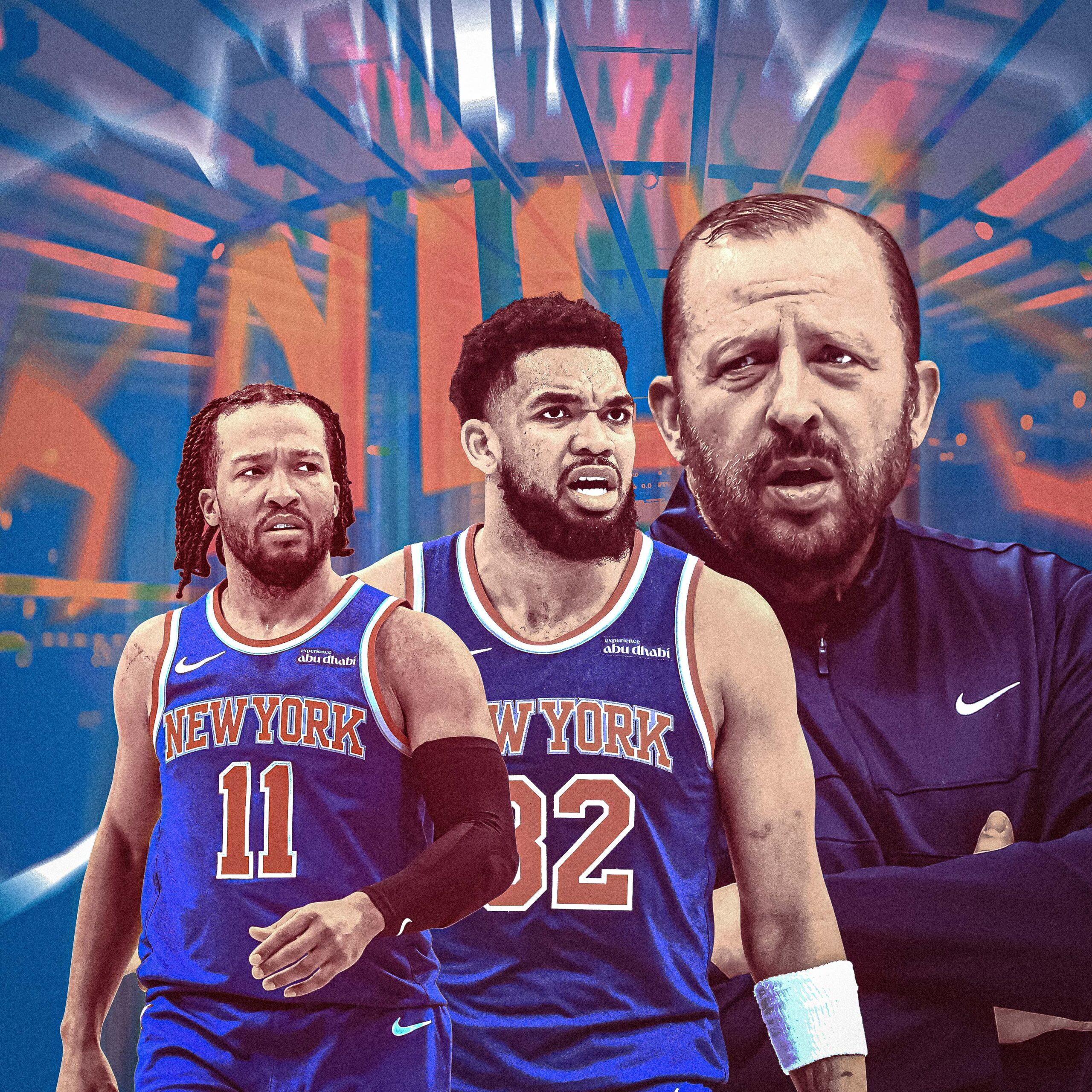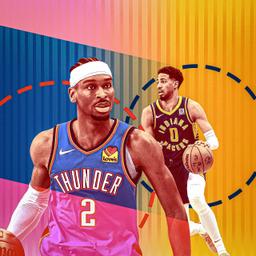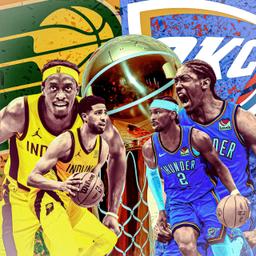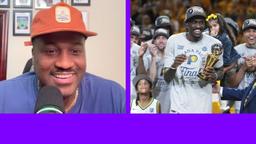
With a little over a minute left in Game 6 of this year’s Eastern Conference semifinals, the organist at Madison Square Garden played a few chords from “Na Na Hey Hey Kiss Him Goodbye,” and the crowd understood the assignment immediately. The ensuing chorus from the ravenous fans carried the New York Knicks to a 119-81 win over the Boston Celtics—the largest margin of victory in a playoff game in New York’s franchise history—to earn a trip to the Eastern Conference finals for the first time in 25 years.
“If you’re a Knick fan, you’ve waited a long time for a night like this,” Mike Breen, the longtime play-by-play voice of the Knicks on MSG, said on the ESPN broadcast. “If you’re a Celtic fan, you’re saying, ‘It’s only the second round, what are they getting excited about?’ Because they’re so used to advancing more and more every year. This is a special night for a loyal fan base. … Even when the team was one of the worst in the NBA, they would be here and chant at games in April that didn’t matter, and they’d be cheering like it’s Game 6 of the NBA Finals.”
That special night spilled out from the arena onto the Manhattan streets. Seventh Avenue became host to a sprawling block party, with brazen fans climbing lampposts, cars, and even billboards in celebration of what had just become the team’s deepest postseason run of the 21st century. It was the kind of frenzied scene you’d typically see only after a championship. Yet for every Knicks loyalist who had survived years of playoff droughts and first-round exits (or who was simply trying to star in the next viral Sidetalk video), the night’s win—against Boston, of all teams—felt like more than enough of a reason to rejoice.
Of course, if you’re reading this, chances are you know what happened next.
The immaculate vibes at the Garden carried into New York’s home-court advantage against the Indiana Pacers in the Eastern Conference finals. After leading by 14 points with just under three minutes left in Game 1, the Knicks collapsed in staggering, unprecedented fashion. Aaron Nesmith transformed into Prime Steph Curry, knocking down six 3-pointers in the fourth quarter, including three in the last minute alone. Tyrese Haliburton then made the miracle buzzer-beater that hit the back rim—the ball flying high enough in the skies to touch the fingertips of the cruel basketball gods—before falling through the net to send the game to overtime. With former Pacer (and Knicks villain) Reggie Miller sitting mere feet away on the sidelines, serving as a broadcaster for TNT, Haliburton re-created Miller’s infamous choke gesture as his teammates swarmed him. And as the Pacers went on to steal Game 1 in a 138-135 victory, the entire trajectory of the series was reshaped before our eyes.
The highs of the Knicks’ closeout win against Boston and the lows of that brutal Game 1 meltdown against Indiana encapsulate what was a roller-coaster Knicks season for the ages. On Saturday, that thrill ride came to a disappointing end for New York, as Jalen Brunson, Karl-Anthony Towns, and Co. couldn’t keep up with Indiana’s unrelenting pace in a must-win Game 6. The Pacers defeated the Knicks 125-108 to punch their ticket to the Finals, crushing every Knicks fan’s dream of seeing their team win a title for the first time since Walt “Clyde” Frazier wore the orange and blue in the 1970s.
It’s difficult to put into words just how bizarrely wonderful yet still so agonizing the 2024-25 season was for fans of the New York Knicks. On one hand, the team had its most successful playoff run since the 1990s. The Knicks overachieved in many ways, especially after a significant retooling of last year’s squad that included the shocking blockbuster trade for Towns right before the start of the season. On the other hand, they choked away that crucial series opener against the Pacers and failed to correct the persistent communication issues that led to the many hair-pulling turnovers and defensive lapses feeding into Indiana’s strengths.
I was fortunate enough to be in the stands at Madison Square Garden when the crowd heard its chants answered and a 40-year-old P.J. Tucker appeared in the closeout game against the Celtics. And I returned again to prematurely cheer as Haliburton’s buzzer-beater careened off the rim in Game 1, only to plunge into the depths of my seat after seeing the ball hurtle back through the net. All of that joy and hope vanished into thin air in an instant, maybe about as Knicksian of an experience that one could ever imagine.
We’re only a few days removed from a crushing series defeat in Indiana that concluded with Miller hand delivering the Eastern Conference championship trophy to his former team, and it’s difficult to grapple with whether this season was a success or a missed opportunity. Now, the Knicks have some big decisions to make in the offseason if the franchise hopes to reach a similar position next year or climb to even greater heights.
I was born in 1994, just a few months after the Knicks fell to Hakeem Olajuwon and the Houston Rockets in an NBA Finals series that went the distance. I was indoctrinated into the Knicks faithful by my family, raised in an iconic era for the franchise defined by annual, bloodied playoff duels between Patrick Ewing and the likes of Michael Jordan, Alonzo Mourning, and Reggie Miller. I was too young to appreciate the magical run that the 1998-99 Knicks made en route to the franchise’s most recent Finals appearance, but I was just old enough to learn the meaning of a “sweep” as I watched New Jersey Nets fans bring brooms to the Garden to close out the Knicks in the first round of the 2004 postseason.
For the vast majority of the 21st century, the Knicks have been one of the most dysfunctional organizations in the NBA. I grew up rooting for teams that commonly traded first-round picks and promising young players like Trevor Ariza for fading stars like Steve Francis or Tracy McGrady, as the Knicks mortgaged away their future for perpetual mediocrity, over and over again. New York missed the playoffs 16 times from 2002 to 2022, losing more games than any other team in the NBA during that time frame. When you lose that much for so long and do so in one of the league’s most lucrative markets and in its harshest media spotlight, you create the kind of reputation that sticks. Even though they were released 15 years apart, animated movies in 2005 (Madagascar) and 2020 (Soul) featured jokes about the team’s timeless ineptitude, teaching new generations of children around the world about the Knicks’ losing ways.
But all those failed seasons under former team presidents like Isiah Thomas and Phil Jackson have made the franchise’s recent success under Leon Rose all the more rewarding. Ever since Rose took the reins of the organization in 2020, the Knicks have reached the playoffs in four out of five seasons. After Rose hired Tom Thibodeau as head coach in his first summer, Thibodeau went on to win Coach of the Year in 2021, and the Julius Randle–led Knicks nearly doubled the number of wins (41) from the previous year (21) on their way to the playoffs for the first time in eight seasons. And following the signing of Brunson in the summer of 2022, New York has steadily ascended from being an underdog to a contender in the Eastern Conference.
Last offseason’s trade for Towns spelled the end of the Randle era in New York, along with the brief fantasy of the ultimate Nova Knicks experience that had glimmered with the July 2024 acquisition of Mikal Bridges: In exchange for Towns, the no. 1 pick of the 2015 draft, Randle and Donte DiVincenzo were sent to the Minnesota Timberwolves. In Towns, the Knicks gained a superstar center to pair with Brunson and the chance to turn the team into an offensive juggernaut. With the defensive-minded trio of wings in Bridges, OG Anunoby, and Josh Hart rounding out the starting five, the expectations for the 2024-25 season were suddenly raised exponentially.
Given how patient the Knicks front office had been in previous years, it was clear from the jump that the organization had its sights set on winning now. After years of stockpiling draft picks, New York traded five first-rounders for Bridges in July and then another in the deal for Towns in early October. It was a bold series of moves that dismantled what had probably been the most beloved Knicks team I can recall ever rooting for—but that rebuild may have been inevitable following Isaiah Hartenstein’s free agency departure to the Thunder and the news that Mitchell Robinson would miss the start of the season due to an ankle surgery.
As good as the newly assembled roster appeared on paper, the growing pains were evident on the court during the course of the regular season. At times, the Knicks looked like the title contenders they were built to be. In December, they went 12-2, rivaling the epic month of January that the 2023-24 squad had pulled off earlier that year, when they went 14-2 before injuries to Randle and Anunoby altered the course of the season. But against the top three teams in the league (Boston, Oklahoma City, and Cleveland), the Knicks compiled a pitiful 0-10 record, losing nearly half of those games by 23 or more points. Particularly early on in the season, Towns looked as dominant as ever on the offensive end—but the flaws in his defense were just as glaring.
Despite the team’s shortcomings, the Knicks finished 51-31 to secure the third seed in the East—and they seemed to be gathering momentum as the playoffs progressed. Even as New York struggled to match the Detroit Pistons’ physicality at times, Brunson’s late-game heroics—or Towns’s, in a stellar 31-point performance in Game 3 of the first round—were enough to save them. The point guard’s ankle breaker against Ausar Thompson ended the first round with a (double) bang, instantly becoming one of the most iconic shots in franchise history.
Against the Celtics, Brunson continued to carry his team through late-game situations to underline why he earned Clutch Player of the Year. Between Robinson’s reemergence as an invaluable force on the glass, Deuce McBride’s rhythm and the depth he provided off the bench, and the wing triumvirate of Bridges, Anunoby, and Hart finally tightening the screws to form the fated “Wingstop,” the rest of the roster was clicking into place at just the right time.
For many Knicks fans (including me), upsetting Boston, the defending champion, to advance to the ECF in such stunning fashion seemed like enough of an achievement to make this season a success. Yet the manner in which New York lost to its rival Indiana—as well as how many warning signs there were leading into the series—still raises plenty of questions about whether it’ll be able to take the leap next season with its current roster construction (and head coach).
Perhaps what was most frustrating about this talented Knicks squad was how rare it was for them all to play up to their individual and collective potential at the same time. Even though the Knicks starters entered the postseason with the most minutes played (940) by any five-person lineup, with more than 200 minutes between them and the next lineup, they struggled to get on the same page through the majority of the playoffs. After they dropped the first two games of the ECF, Thibodeau decided to replace Hart with Robinson for the final four contests of the series. (And Thibodeau almost never adjusts his lineup, unless Taj Gibson is somewhere in sight.)
In the aftermath of the Knicks’ Game 6 defeat, The Athletic’s James L. Edwards III and Fred Katz published a story detailing the communication issues that had plagued the team throughout the year. The writers reference the unusual number of players-only meetings that were held during the postseason, “with various degrees of intensity,” following embarrassing defeats. But more pointedly, they highlight Towns’s defense as a consistent source of frustration in the locker room.
“Behind the scenes, [Knicks players] and coaches expressed frustration with Towns’ defensive habits—less concerned with his talent level and more with his process on that end,” Edwards and Katz wrote. “Too often, Towns executed incorrect coverages without communicating why he did it. After it became a theme, players worried Towns didn’t grasp the importance of the matter.”
The team’s core group is all signed through next season, so the Knicks’ chemistry may naturally evolve with more time on and off the court together. A full offseason may afford Towns the opportunity to work with the team staff to correct this type of bad habit. However, given the 29-year-old’s similar track record on defense in Minnesota, this may just be an inseparable part of the agonizing, ecstatic Karl-Anthony Towns experience. And if that’s the case, will this version of the Knicks ever be able to win a title?
Knicks captain Brunson, at least, is ready to run it back as the team currently stands. "The utmost confidence—overconfident, seriously," he told the media on Saturday. "There's not an ounce of any type of doubt. I'm that confident with this group."
As admirable as Brunson’s loyalty may be, it’s hard not to look at this season and wonder whether this squad can truly evolve together. There may be better head coaches than Thibodeau on the market who could take the Knicks to the next level (but don’t ask Brunson about that one) or players who more fully complement Brunson’s strengths and weaknesses. But one of the biggest regrets that Knicks fans had coming into this season was the fact that we never had the chance to see last year’s group run it back together in full health after they fell just short of the ECF.
New York has plenty of time to dwell on existential questions such as these as its summer begins—and it’s a little too early to wonder whether it should give up on the Towns experiment to make a big swing for Giannis Antetokounmpo. (Or is it?) As frustrating as some of the major factors in the Knicks’ series loss to the Pacers are, from the communication issues to Hart’s untimely disappearance to Thibodeau’s ever-questionable decision-making, this team still outperformed nearly every Knicks roster that’s been assembled in my lifetime. And with both Jayson Tatum’s and Damian Lillard’s unfortunate injuries lowering their respective teams’ ceilings next season, there’s a decent chance that the Knicks will have another shot to take the East this time next year.
But no matter what, with Brunson leading this team—in whatever form it takes next—in the years to come, Knicks fans finally have a tangible dream worth rooting for.





